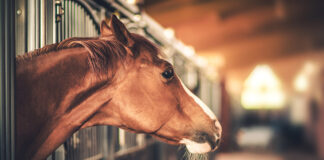Use this step-by-step approach to make a spooky horse more confident or handle an unexpected scary scenario.
Whether your horse is green or experienced, mostly brave or consistently timid, read on to find out how to cut through the tension and get back to enjoying your partnership with your horse.
Becoming a Trustworthy Leader
The first thing to understand is why your horse is spooking. This is a natural reaction because horses are first and foremost prey animals, accustomed to protecting themselves by taking flight. A horse that ignores a snapping twig or other signs of danger nearby could easily end up a predator’s meal.
The best way to improve your horse’s reaction to scary objects, experiences, or sounds is to become a leader that your horse can have faith in. A good herd leader is consistent in their reactions and demeanor and does not endanger the herd.
As a human, being consistent can be hard. We often come to the barn with many worries that our horses know nothing about, such as difficult relationships, work problems, bills to pay, bad traffic, et cetera. We must put all of this aside and be like our horses: present in the moment.
When your horse is anxious, excitable, or anything undesirable, you need to approach him patiently and objectively. This can be more difficult than it sounds!
For your horse to trust you, you must never act out of frustration or try to rush him through his analysis process. It’s also important that you never put your horse in a situation that you know may overwhelm him. For example, riding on a big group trail ride when he hasn’t even been out with just one buddy, entering a full division at a horse show when he’s never schooled off property, or asking him to take a long trailer ride to a new place when he hasn’t regularly loaded and taken short trips.
Encourage Curiosity
The only way for your horse to become braver is for him to understand the world around him a little better. Encourage your horse’s natural curiosity by directing him toward the object or situation that caused him to spook.
Your horse will then show you his flight distance—how close he is willing to get to an object before he feels that he must turn and run. Your job is to stop your horse calmly just as he arrives at his flight distance, which is easily identified by the amount of tension in his body. This acknowledges that you’re aware there is something scary nearby, but also asks him to think and analyze rather than giving in to his instinct to run.
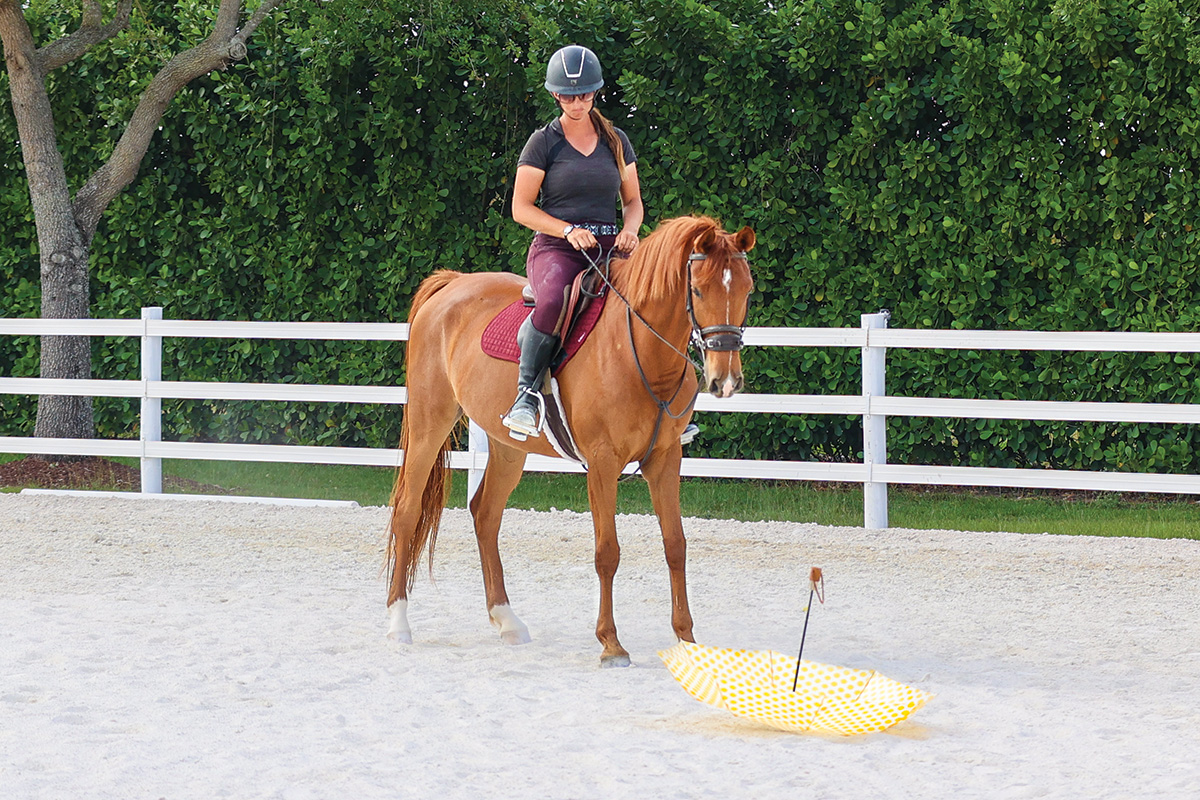
Once the tension leaves his body, ask him to move toward the object until he tenses up again. In this way, the flight distance shortens, until you are right in front of the source of fear.
From there, encourage him to reach out and touch the object, if possible. Touching shows the horse that the object has no intention of harming him and gives him a more complete picture of the object, as delicately touching with the nose often turns to investigating with more smelling, nose rubbing, and eventually biting.
If the scary thing is more situational (such as people in bleachers), ask your horse to stay close until he drops his head, licks and chews, and/or peacefully turns his attention elsewhere.
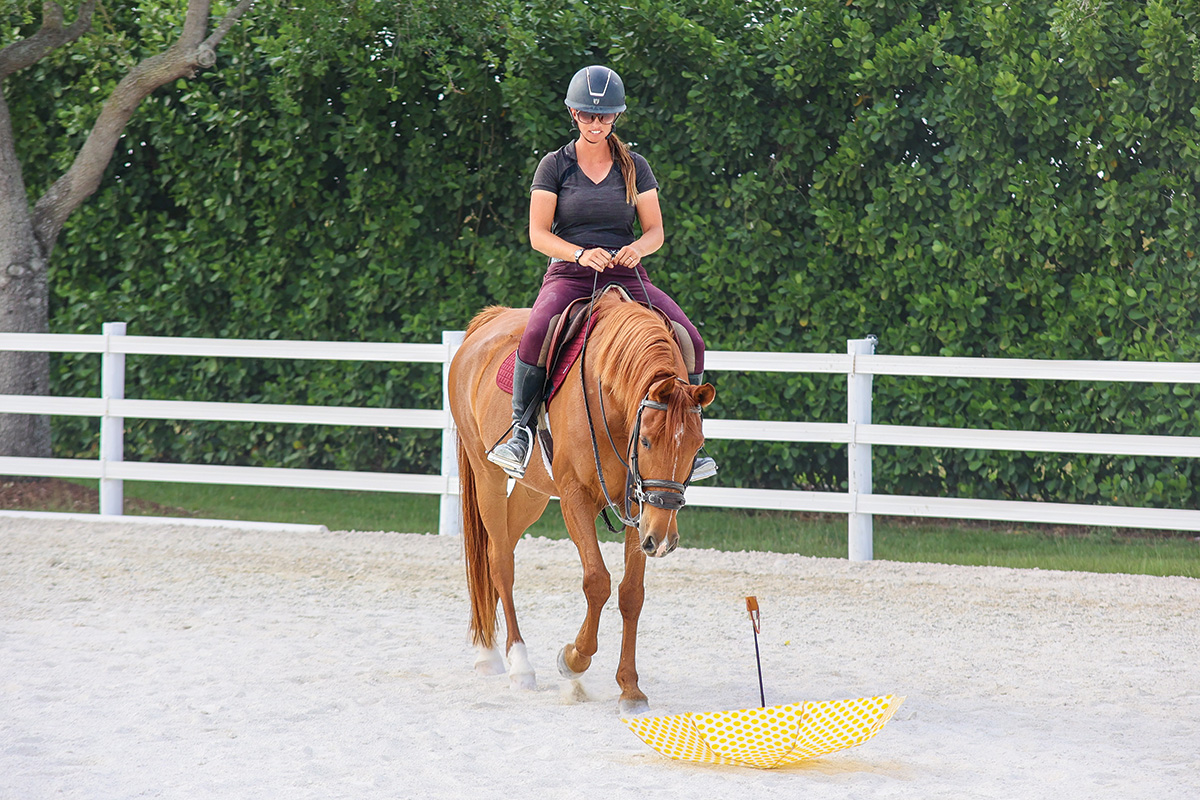
If your horse remains on high alert in a situation or is reluctant to investigate an object, it may help him greatly if you dismount and engage in the process with him. This shows that you, as the herd leader, have examined the threat and deemed it safe. This also allows him to gain some of the information he needs to feel safe as he watches you touch, slowly move, sit on, or be next to the object.
In any scenario, acceptance and calm interaction with the source of the original fear should be rewarded with praise.
This approach will work no matter what is causing your horse to spook. By being consistently allowed to explore and build confidence, your horse will begin to learn that the correct response to something unfamiliar is to investigate.
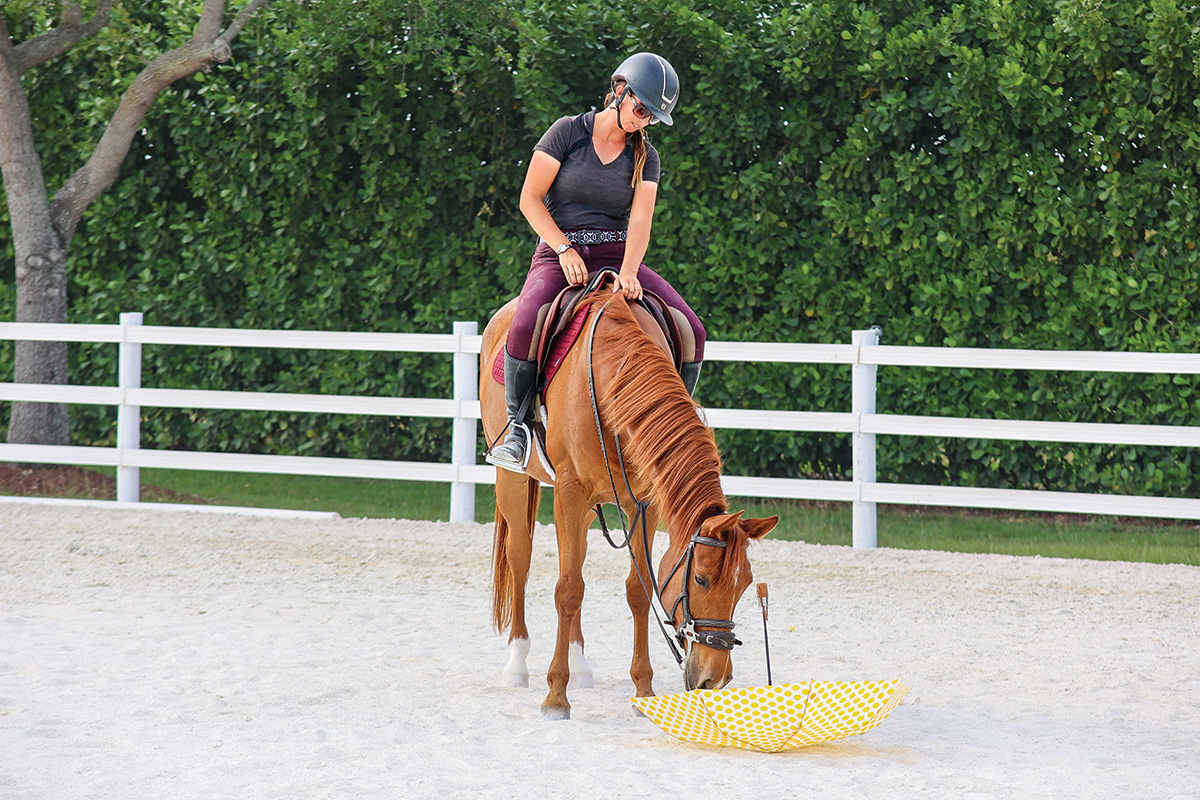
Once he builds a catalogue of positive experiences and situations in which you were his herd leader, your credibility grows as does his trust in you. There’s no better feeling!
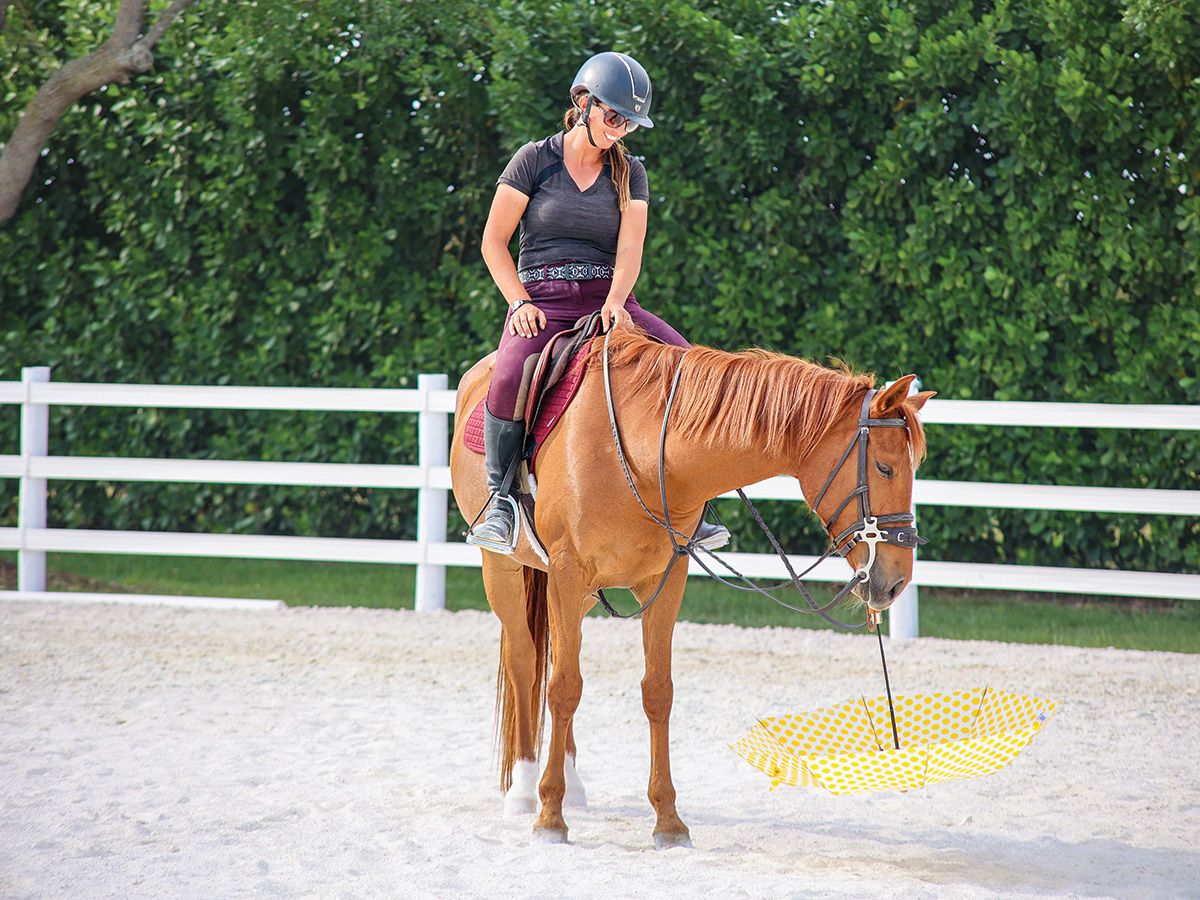
Trail Walking
I often hear about owners who want to take their horse trail riding but are worried about riding their horse into a large, unknown area that is different from what he encounters on a day-to-day basis.
I encourage these owners to find a horse-friendly park and go trail walking/hiking with their horse. I suggest an extra-long lead rope or longeline to allow for your horse’s flight distance if he is surprised by something during the walk.
While you’re safely on the ground, you and your horse can experience all types of sights and sounds, including road traffic, bicycles, wooded areas and the creatures that come with it. This will give you the opportunity to gauge how your horse responds to a new environment, and a whole lot of chances for your horse to practice his new investigative techniques!
This article about helping a spooky horse gain confidence appeared in the August 2023 issue of Horse Illustrated magazine. Click here to subscribe!




